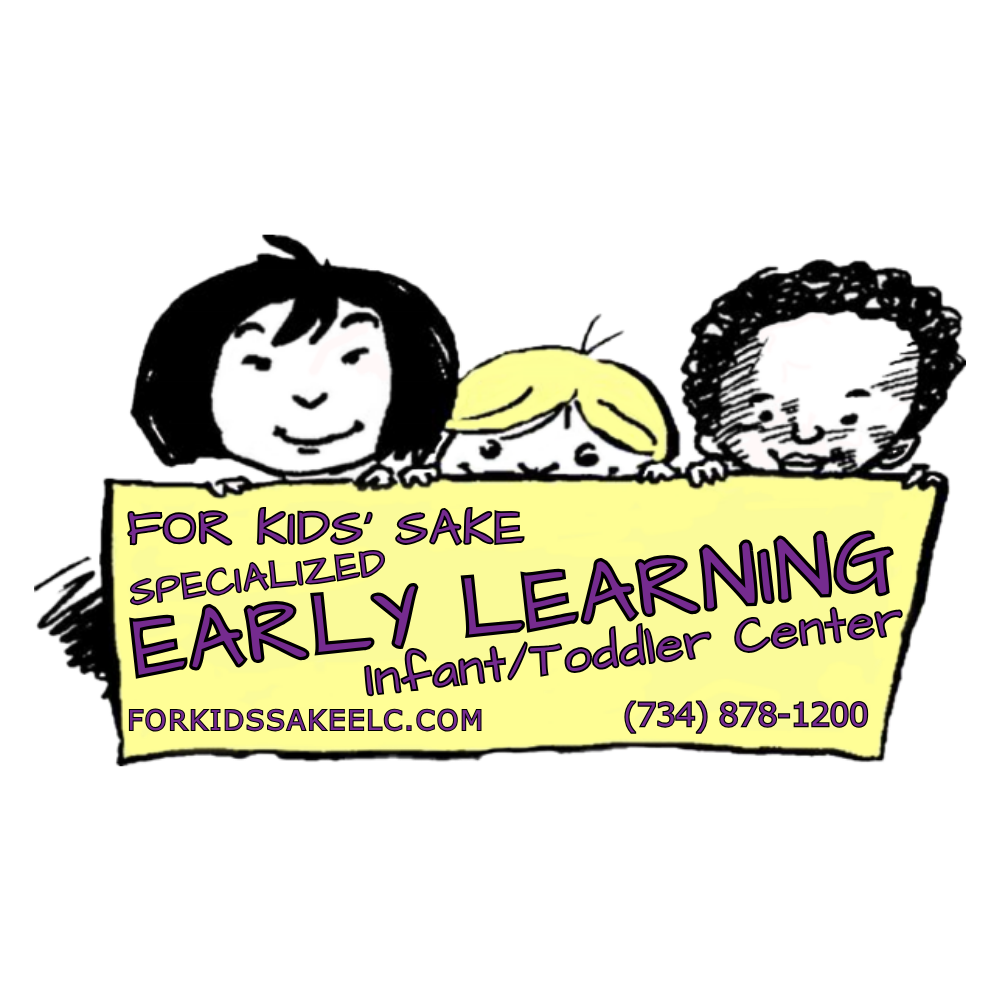Our bottom line: children who have daily opportunities to count, sort, and measure real objects become confident, competent problem solvers in school and in everyday life.
We believe the best way to support the development of mathematical skills is to give young children concrete experiences with real objects that they can count, sort, group, and sequence. As they play, we provide tools and vocabulary to help them synthesize concepts such as size, shape, and quantity.
At For Kid’s Sake Early Learning Center, you will find:
- Classrooms are stocked with various objects in large quantities to count, sort, and sequence.
- Teachers incorporate math into the daily routine: counting, estimating, and measuring.
- Activities that increase spatial awareness such as geometric puzzles, Legos®, and blocks.
- Activities that encourage children to compare and contrast objects based on characteristics.
- Tools for measuring, weighing, and quantifying.
- Maps, models, and other spatial representations of children’s real-world experiences.
- Bridge activities that help parents extend math play with children at home.
Key Math Concepts in Early Childhood
- Patterns: Children begin to recognize similarities and differences at an early age and start to quantify and describe these patterns in increasingly sophisticated ways throughout the preschool years. Pattern skills include sorting, sequencing, and seriating.
- Counting and Measurement: Children become aware of one-to-one correspondence: the fact that each number represents a real object, sometime around 3-4 years of age. They also acquire vocabulary and concepts to compare items using terms such as greater than, less than, and equal. Preschoolers estimate size and weight and can measure these using tools.
- Geometry and Spatial Sense: Children identify symmetry and recognize geometric shapes and how they relate to each other. This awareness translates to creative arts, problem-solving, and fine-motor achievements. We teach according to children’s actual development rather than expecting them to conform to an age-based standard. Our curriculum is cumulative, so older children might demonstrate many outcomes on this page. We encourage children with increased interest and ability in math to tackle complex problems and work on team projects.
Infants:
- Fill and dump containers of blocks, pop beads, and other safe manipulatives.
- Play with geometrically shaped blocks.
- View high-contrast patterned mobiles, textiles, and wall art.
- Experience musical and rhythmic patterns as they clap, bounce, and sway to nursery rhymes and music.
Toddlers:
- Use large beads and pegboards to create sequences and patterns.
- Sort manipulatives by color, shape, and size.
- Stack Duplos® and blocks in towers.
- Color patterns and cut shapes out of construction paper.
- Use comparative terms to discuss size: Which is taller? Heavier? Smaller?
- Begin to count 1-3 objects accurately.
Preschoolers:
- Recognize natural and man-made patterns.
- Design their own patterns using manipulatives and art materials.
- Build structures using toothpicks and marshmallows or gumdrops, or larger structures with cardboard boxes.
- Count 1-10 or 20 objects accurately; perform simple addition and subtraction using real objects.
- Begin to write numerals.
- Sequence objects or events by their characteristics.
- Begin to use a calendar to keep track of time.
- Measure items using relative objects: how many blocks tall am I?
School Age
- Recognize patterns in music and art and create their own.
- Use written numerals for information; memorize phone numbers, etc.
- Begin to recognize math symbols such as +, -, and =.
- Measure items using standard units: inches, pounds, ounces, feet, and so on.
- Count real objects and practice counting items in sets: by 1s, 2s, and 10s.
- Begin to tell time using a dial clock.
- Write numerals and understand real numbers from 1-25.
- Read and create simple graphs and charts about weather, surveys, and simple math problems.
- Draw and use maps to represent real places.
- Experiment with symmetrical construction.
